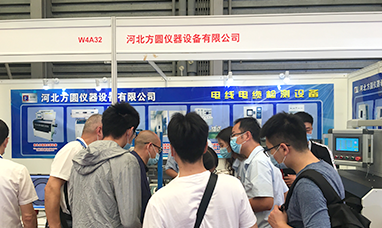china cable burning test chamber
China Cable Burning Test Chamber Ensuring Safety and Standards
In today's world, where electrical systems power much of our daily lives, the integrity and safety of cables have come to the forefront of engineering and regulatory standards. Among the innovative testing methodologies employed to ensure that cables meet the required safety standards is the cable burning test chamber—an essential tool found in various laboratories across China and the globe.
Understanding Cable Burning Tests
Cable burning tests are an essential part of assessing the safety and performance of electrical cables under controlled conditions. The primary focus of these tests is to evaluate how cables react to fire—a critical factor that can determine the fate of a building and its occupants in case of a blaze. These tests allow manufacturers and regulatory bodies to understand the flammability of cables and the toxic byproducts released when they burn.
The Cable Burning Test Chamber
At the heart of this testing process is the cable burning test chamber. This specialized piece of equipment is designed to simulate real-life fire conditions. Typically, these chambers are equipped with ignition sources, heat control systems, ventilation controls, and various measuring devices to monitor emissions and measure parameters such as combustion time, heat release, and smoke production.
The construction of the test chamber fulfills specific safety and engineering standards, ensuring that the tests yield reliable results. The design allows for the safe containment of flames and the precise measurement of key variables, allowing for a thorough analysis of each cable's performance.
Testing Procedures
The testing procedures within a cable burning test chamber generally adhere to international standards such as IEC 60332, UL 910, or similar regulations specific to different regions. These standards outline the methodology for conducting the tests, including how to prepare the cable samples, the conditions under which they are to be burned, and how to record the outcomes accurately.
china cable burning test chamber

A typical test might involve placing a length of cable in a vertical or horizontal orientation, igniting one end, and observing how flames spread along the cable length. The duration until the cable fails—i.e., the moment when it can no longer conduct electricity—is meticulously recorded. Additionally, the toxic substances released during combustion are analyzed, providing information crucial for assessing safety in environments where these cables might be used.
Importance of Cable Burning Tests
The implications of the findings from cable burning tests are far-reaching. For one, they guide manufacturers in the design and improvement of cable products—helping them to create safer, more fire-resistant cables. Furthermore, these tests play a crucial role in regulatory compliance, ensuring that cables used in buildings, vehicles, and other infrastructure adhere to safety codes that protect lives.
Moreover, these tests contribute to enhancing public health safety. By identifying cables that emit hazardous smoke or toxic gases when burnt, manufacturers can mitigate risks associated with cable fires, resulting in safer environments for occupants.
Future Trends
As technology advances, cable burning test chambers are expected to evolve, incorporating more sophisticated mechanisms for real-time data collection and analysis. The integration of artificial intelligence and machine learning might also enhance predictive modeling, allowing manufacturers to anticipate and address potential flammability issues before they arise.
Furthermore, as cables become more complex in their design—incorporating materials such as nanomaterials and smart technologies—the need for comprehensive and innovative testing methods will grow. The ongoing development of the cable burning test chamber will play an essential role in keeping pace with these advancements.
Conclusion
In conclusion, the cable burning test chamber is a vital component of modern electrical engineering practices in China and worldwide. It not only tests cable performance under fire conditions but also safeguards public health and safety. As we continue to rely on electricity for an increasing number of applications, ensuring that our infrastructure is built with the utmost regard for fire safety is paramount. The evolution of testing technologies will ensure that electrical cables meet the highest standards, ultimately protecting lives and property in our increasingly electrified world.
-
Why the Conductor Resistance Constant Temperature Measurement Machine Redefines Precision
NewsJun.20,2025
-
Reliable Testing Starts Here: Why the High Insulation Resistance Measuring Instrument Is a Must-Have
NewsJun.20,2025
-
Flexible Cable Flexing Test Equipment: The Precision Standard for Cable Durability and Performance Testing
NewsJun.20,2025
-
Digital Measurement Projector: Precision Visualization for Modern Manufacturing
NewsJun.20,2025
-
Computer Control Electronic Tensile Tester: Precision and Power for the Modern Metal Industry
NewsJun.20,2025
-
Cable Spark Tester: Your Ultimate Insulation Assurance for Wire and Cable Testing
NewsJun.20,2025
 Copyright © 2025 Hebei Fangyuan Instrument & Equipment Co.,Ltd. All Rights Reserved. Sitemap | Privacy Policy
Copyright © 2025 Hebei Fangyuan Instrument & Equipment Co.,Ltd. All Rights Reserved. Sitemap | Privacy Policy
